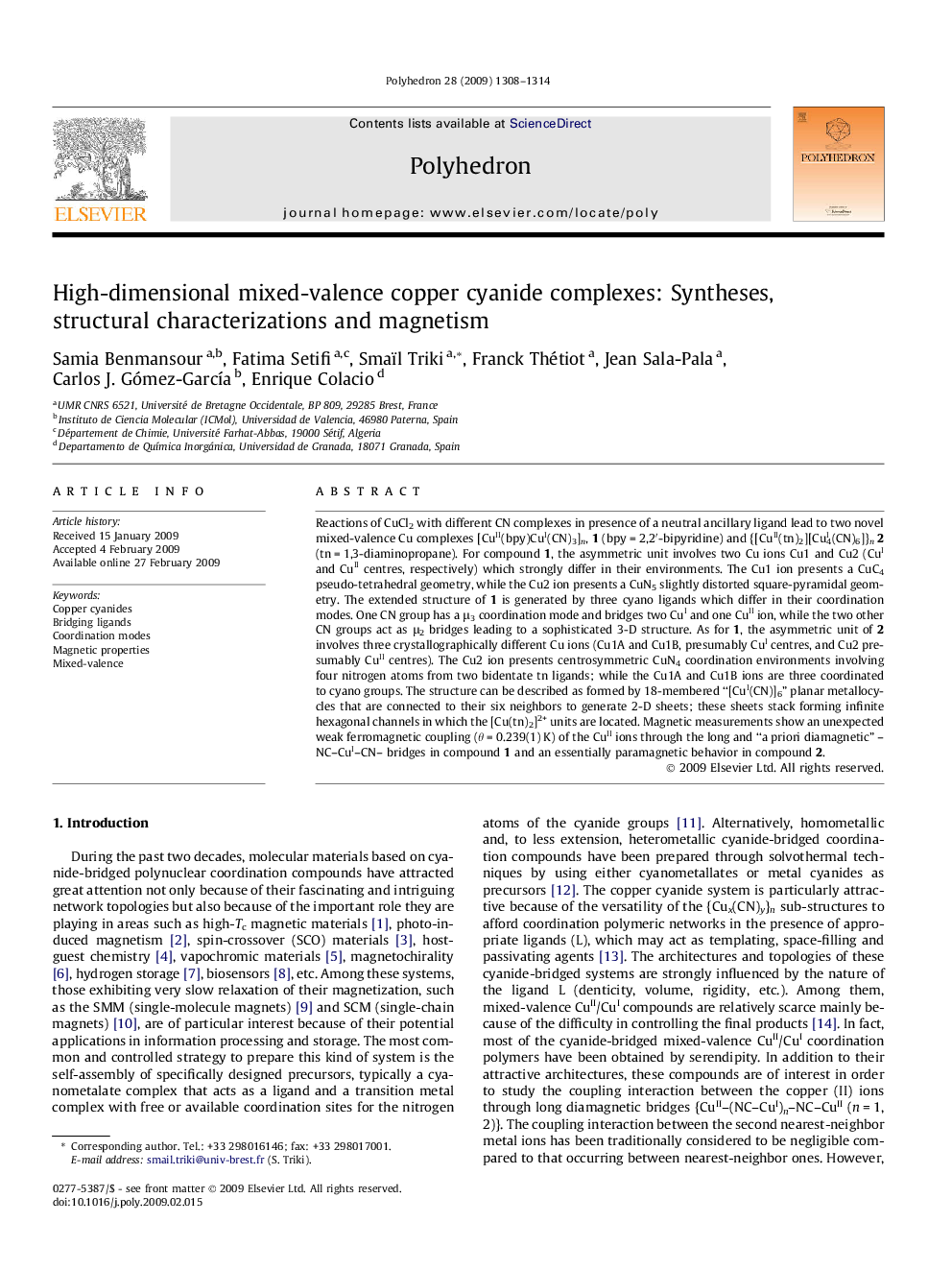| Article ID | Journal | Published Year | Pages | File Type |
|---|---|---|---|---|
| 1334984 | Polyhedron | 2009 | 7 Pages |
Reactions of CuCl2 with different CN complexes in presence of a neutral ancillary ligand lead to two novel mixed-valence Cu complexes [CuII(bpy)CuI(CN)3]n, 1 (bpy = 2,2′-bipyridine) and {[CuII(tn)2][CuI4(CN)6]}n2 (tn = 1,3-diaminopropane). For compound 1, the asymmetric unit involves two Cu ions Cu1 and Cu2 (CuI and CuII centres, respectively) which strongly differ in their environments. The Cu1 ion presents a CuC4 pseudo-tetrahedral geometry, while the Cu2 ion presents a CuN5 slightly distorted square-pyramidal geometry. The extended structure of 1 is generated by three cyano ligands which differ in their coordination modes. One CN group has a μ3 coordination mode and bridges two CuI and one CuII ion, while the two other CN groups act as μ2 bridges leading to a sophisticated 3-D structure. As for 1, the asymmetric unit of 2 involves three crystallographically different Cu ions (Cu1A and Cu1B, presumably CuI centres, and Cu2 presumably CuII centres). The Cu2 ion presents centrosymmetric CuN4 coordination environments involving four nitrogen atoms from two bidentate tn ligands; while the Cu1A and Cu1B ions are three coordinated to cyano groups. The structure can be described as formed by 18-membered “[CuI(CN)]6” planar metallocycles that are connected to their six neighbors to generate 2-D sheets; these sheets stack forming infinite hexagonal channels in which the [Cu(tn)2]2+ units are located. Magnetic measurements show an unexpected weak ferromagnetic coupling (θ = 0.239(1) K) of the CuII ions through the long and “a priori diamagnetic” –NC–CuI–CN– bridges in compound 1 and an essentially paramagnetic behavior in compound 2.
Graphical abstractThe syntheses, structural characterization and magnetic properties of two mixed-valence copper cyanide compounds [CuII(bpy)CuI(CN)3]n, (1) and {[CuII(tn)2][CuI4(CN)6]}n (2) are presented. The 3-D structure of 1, is generated by μ2- and μ3-cyanide bridges (–CuII–NC–CuI– and –CuII–NC–(CuI)2–), while the 2-D hexagonal networks of 2 are generated by only –CuI–NC–CuI– bridges. Compound 1 presents an unexpected weak ferromagnetic coupling through the “a priori diamagnetic” –NC–CuI–CN– bridges.Figure optionsDownload full-size imageDownload as PowerPoint slide
